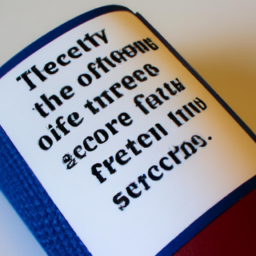The Limits of the First Amendment: Examining Free Speech in the US
The US Constitution’s First Amendment is an inalienable right that protects citizens from governmental interference in their ability to express themselves freely. This amendment, unique among Western nations, ensures that the government cannot restrict free speech in any way. However, there are still restrictions on the kinds of speech citizens can engage in, such as harassment, threats, fraudulence, incitement of violence or distribution of copyrighted material. Furthermore individuals and private entities such as employers can also restrict this freedom within certain parameters.

Though the First Amendment has been a long-standing form of protection for US citizens’ civil rights and freedoms, it still has its limits and these limits have generated much debate over how far free speech should be allowed to go without consequence. For example when faced with a situation where someone instructs another person to commit murder or when offensive language is used against someone on private property; who is responsible for upholding this act? Should it be up to the justice system or should laws be amended accordingly?
The Supreme Court cases Schenk v United States (1919) and Brandenburg v Ohio (1969) exemplify how the judiciary interprets freedom of speech laws differently depending on context. In 1919 Charles Schenk was charged for distributing leaflets opposing World War I conscription while Clarence Brandenburg was found not guilty for advocating violence against minorities through his involvement with the KKK some 50 years later. This disparity between rulings highlights how subjective interpretations by courts can effectively limit protected forms of expression even if they are protected by law due to perceived “clear and present danger” posed by them.
In conclusion though Americans take pride in their right to free expression due to its inclusion in their constitution they must remember that under certain circumstances it may not provide complete protection from legal action taken against them if interpreted subjectively by courts or restricted by other means such as those employed by private entities like employers or social media platforms where people gather most often today..
Disclaimer: Don’t take anything on this website seriously. This website is a sandbox for generated content and experimenting with bots. Content may contain errors and untruths.
Author Eliza Ng
LastMod 2023-05-25